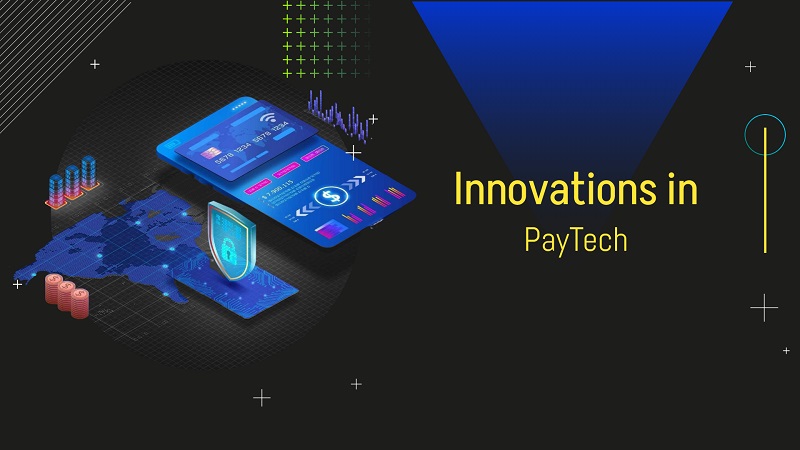The global payments landscape is undergoing a profound transformation due to rapid advancements in payment technologies and the emergence of digital currencies. These innovations are reshaping the way individuals, businesses, and governments conduct transactions, offering faster, more secure, and more convenient methods for transferring money. From mobile payments and contactless transactions to the rise of cryptocurrencies and central bank digital currencies (CBDCs), payment technology is entering a new era of digitization, decentralization, and democratization.
Innovations in Payment Technologies
Payment Technology is going through the phase of continuous innovation. With evolution of new technology platform, PayTech offers various innovative products and services. Companies are using technology to give seamless payment experience to its customers. Innovations in payment technologies can be categorized as below –
1. Mobile Payments and Digital Wallets
One of the most significant advancements in payment technology is the rise of mobile payments and digital wallets. Mobile payments enable users to make transactions directly from their smartphones, eliminating the need for cash or physical cards.
- Mobile Wallets: Platforms like Apple Pay, Google Pay, and Samsung Pay allow users to store their payment card details securely on their mobile devices and make purchases using near-field communication (NFC) technology. Digital wallets also support loyalty cards, transit passes, and more, creating a comprehensive digital payment ecosystem.
- QR Code Payments: In markets like China and India, QR code-based payments have become increasingly popular. Platforms like WeChat Pay and Alipay allow consumers to scan QR codes with their smartphones to pay for goods and services instantly.
- Peer-to-Peer Payments (P2P): Apps like Venmo, Cash App, and Zelle have made it easier for individuals to transfer money to friends, family, or businesses instantly via mobile devices. This seamless, fast, and user-friendly experience has driven widespread adoption of P2P payments globally.
Impact: Mobile payments and digital wallets offer convenience, speed, and security, allowing consumers to conduct transactions without the need for physical cash or cards. These solutions are particularly beneficial in countries with high smartphone penetration but limited access to traditional banking infrastructure.
2. Contactless Payments
Contactless payments have gained significant traction in recent years, particularly accelerated by the COVID-19 pandemic. This technology allows consumers to make payments by simply tapping their card or mobile device on a contactless-enabled point-of-sale (POS) terminal.
- Tap-and-Go Payments: Contactless cards equipped with RFID (Radio Frequency Identification) or NFC technology enable tap-and-go payments, reducing transaction times and minimizing physical contact with payment terminals.
- Wearable Payments: Wearables like smartwatches and fitness trackers equipped with payment capabilities (e.g., Apple Watch or Fitbit Pay) allow consumers to make payments conveniently without the need for a wallet or phone.
Impact: Contactless payments have revolutionized the retail experience by offering faster, more hygienic, and more convenient ways to pay, leading to widespread adoption in industries such as transportation, hospitality, and retail.
3. Biometric Authentication
Biometric authentication has emerged as a key innovation in payment security, offering an additional layer of protection for digital transactions. Biometrics use unique physical or behavioral characteristics, such as fingerprints, facial recognition, or voice patterns, to verify a user’s identity.
- Fingerprint Scanning: Many smartphones are equipped with fingerprint sensors that allow users to authenticate payments securely and quickly. Platforms like Apple Pay and Google Pay use biometrics for payment approval, enhancing security.
- Facial Recognition: Payment platforms are integrating facial recognition technology to authenticate transactions. For instance, Face ID on Apple devices enable users to approve payments using their face, reducing the risk of fraud.
Impact: Biometric authentication significantly enhances payment security by ensuring that only authorized users can complete transactions. It also offers convenience, as users no longer need to remember passwords or PINs to approve payments.
4. Instant Payment Systems
The demand for real-time payments has led to the development of instant payment systems, which allow funds to be transferred between bank accounts within seconds, regardless of the time of day or day of the week.
- Faster Payment Networks: Countries worldwide have implemented faster payment systems such as SEPA Instant Credit Transfer in Europe, UPI (Unified Payments Interface) in India, and Zelle in the U.S., enabling real-time payments for both consumers and businesses.
- ISO 20022 Standards: The adoption of ISO 20022, a global messaging standard for payments, is improving the speed, transparency, and interoperability of international payments, facilitating real-time cross-border transactions.
Impact: Instant payment systems improve cash flow for businesses, enhance financial inclusion, and offer consumers immediate access to funds. They are particularly useful for small businesses and freelancers who rely on quick payments to manage cash flow.
5. Embedded Payments and APIs
Embedded payments integrate payment functionality directly into non-financial platforms and apps, allowing users to make payments without leaving the platform. This trend is driven by the use of APIs (Application Programming Interfaces) that enable seamless payment integration.
- In-App Payments: E-commerce platforms, ride-hailing services, and food delivery apps like Uber and DoorDash use embedded payments to streamline transactions. Customers can store their payment details within the app and complete purchases without being redirected to a third-party payment gateway.
- Buy Now, Pay Later (BNPL): BNPL platforms like Afterpay, Klarna, and Affirm offer an embedded financing option at checkout, allowing consumers to split their payments into interest-free installments.
Impact: Embedded payments enhance user experience by reducing friction in the payment process and enabling more seamless transactions. This trend is transforming industries such as e-commerce, transportation, and digital services, creating new opportunities for businesses to monetize transactions.
The Emergence of Digital Currencies
The emergence of digital currencies shaping payment landscape like never before. The rise of Digital Currencies marks a major shift in the operation of traditional financial systems. Digital currencies offer the potential to revolutionize payments, improve financial inclusion, and enhance monetary policy tools.
1. Cryptocurrencies
The rise of cryptocurrencies has been one of the most significant developments in the payment’s ecosystem. Cryptocurrencies, such as Bitcoin, Ethereum, and Ripple, are decentralized digital assets that use blockchain technology to enable secure, peer-to-peer transactions without the need for intermediaries like banks.
- Decentralization: Cryptocurrencies operate on blockchain networks, which are decentralized, distributed ledgers that record all transactions. This reduces the need for central authorities and intermediaries, providing users with more control over their funds.
- Cross-Border Payments: Cryptocurrencies offer fast and cost-effective cross-border transactions, making them ideal for international payments. Ripple (XRP), for example, is designed to facilitate fast, low-cost international money transfers for businesses and financial institutions.
- Digital Assets and Tokens: In addition to serving as currencies, cryptocurrencies like Ethereum enable the creation of smart contracts and tokenized assets, which can represent anything from real estate to intellectual property.
Impact: Cryptocurrencies provide an alternative to traditional financial systems, offering greater financial sovereignty and the potential for faster, cheaper transactions. However, they face regulatory challenges and volatility, which has limited widespread adoption for everyday payments.
2. Central Bank Digital Currencies (CBDCs)
Central bank digital currencies (CBDCs) are digital versions of fiat currency issued and regulated by central banks. Unlike cryptocurrencies, CBDCs are centralized and represent a legal claim on the central bank, similar to traditional currency.
- Digital Cash: CBDCs function as a digital form of cash that can be used for transactions between individuals, businesses, and governments. They are designed to complement physical cash, providing a state-backed, secure alternative to private cryptocurrencies.
- Global Adoption: Several countries, including China, the European Union, and the Bahamas, have already launched or are piloting CBDCs. China’s Digital Yuan (e-CNY) has been one of the most high-profile CBDC initiatives, aiming to enhance the efficiency of domestic payments and reduce reliance on third-party payment providers.
- Financial Inclusion: CBDCs have the potential to enhance financial inclusion by providing digital access to banking services for people in remote areas or without traditional bank accounts.
Impact: CBDCs offer central banks a way to modernize monetary systems and improve the efficiency of payments, while maintaining regulatory oversight. They also provide an opportunity to ensure the stability of national currencies in the face of growing competition from cryptocurrencies and stablecoins.
3. Stablecoins
Stablecoins are a class of cryptocurrencies designed to maintain a stable value by being pegged to a reserve asset, such as the U.S. dollar or gold. Stablecoins offer the benefits of cryptocurrencies, such as speed and security, without the volatility typically associated with assets like Bitcoin.
- Popular Stablecoins: Examples of stablecoins include Tether (USDT), USD Coin (USDC), and Dai, which are pegged to the value of the U.S. dollar, offering a digital alternative to traditional currencies.
- Cross-Border Payments and Remittances: Stablecoins are increasingly being used for cross-border payments and remittances, offering faster and cheaper alternatives to traditional banking channels. Their stability makes them suitable for transactions that require predictability in value.
- Decentralized Finance (DeFi): Stablecoins are integral to the growing DeFi ecosystem, where users can lend, borrow, and trade assets on decentralized platforms without intermediaries.
Impact: Stablecoins bridge the gap between traditional finance and cryptocurrencies by offering a stable digital asset that can be used for payments, remittances, and DeFi applications. Their stability and scalability make them an attractive option for businesses and consumers looking for fast, reliable digital payments.
Innovations in payment technologies, including mobile payments, contactless payments, and biometric authentication, have revolutionized how consumers and businesses conduct transactions. The emergence of digital currencies like cryptocurrencies, stablecoins, and CBDCs is reshaping the financial landscape, offering new possibilities for global payments, financial inclusion, and decentralized finance.
As these technologies continue to evolve, they are likely to play a central role in the future of commerce and finance, creating a more connected, secure, and efficient global economy. However, challenges such as regulatory uncertainty, security concerns, and adoption barriers remain, and addressing these will be crucial for the long-term success and integration of new payment technologies and digital currencies into the mainstream financial system.







